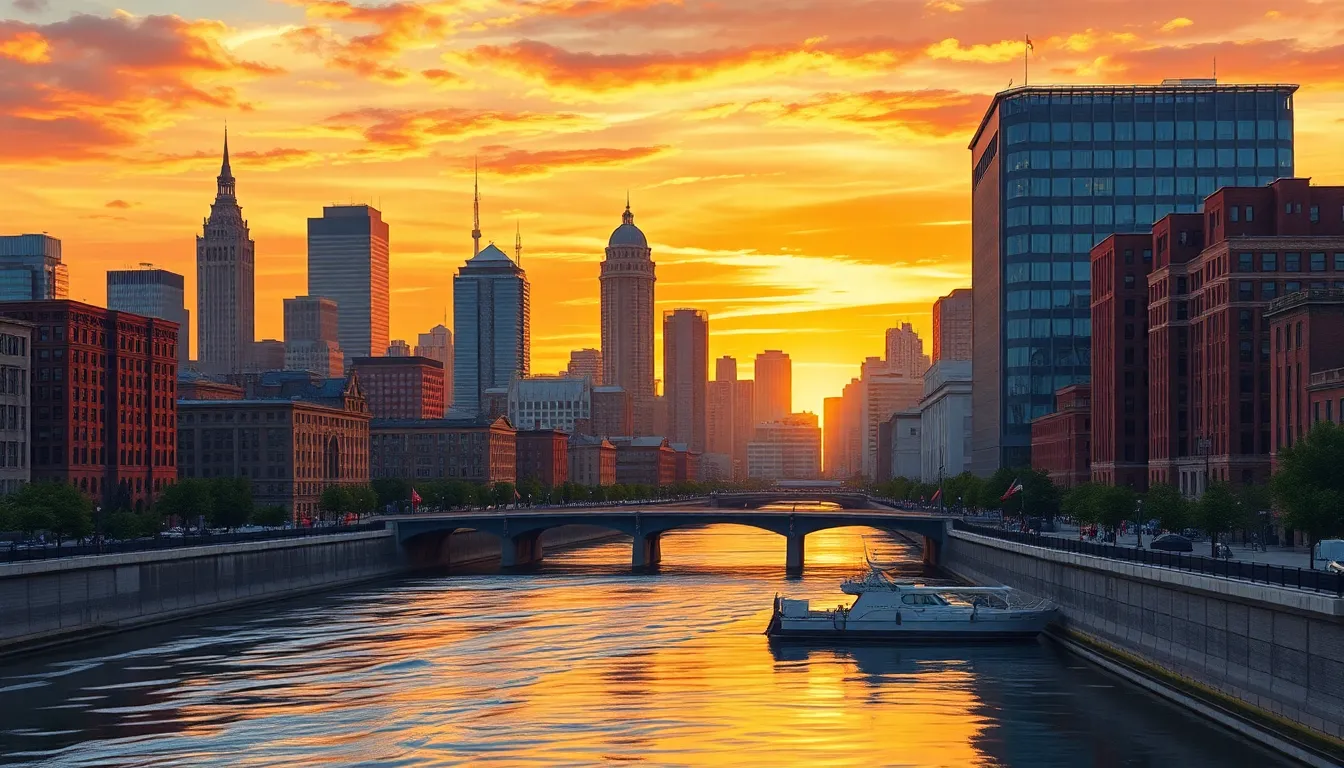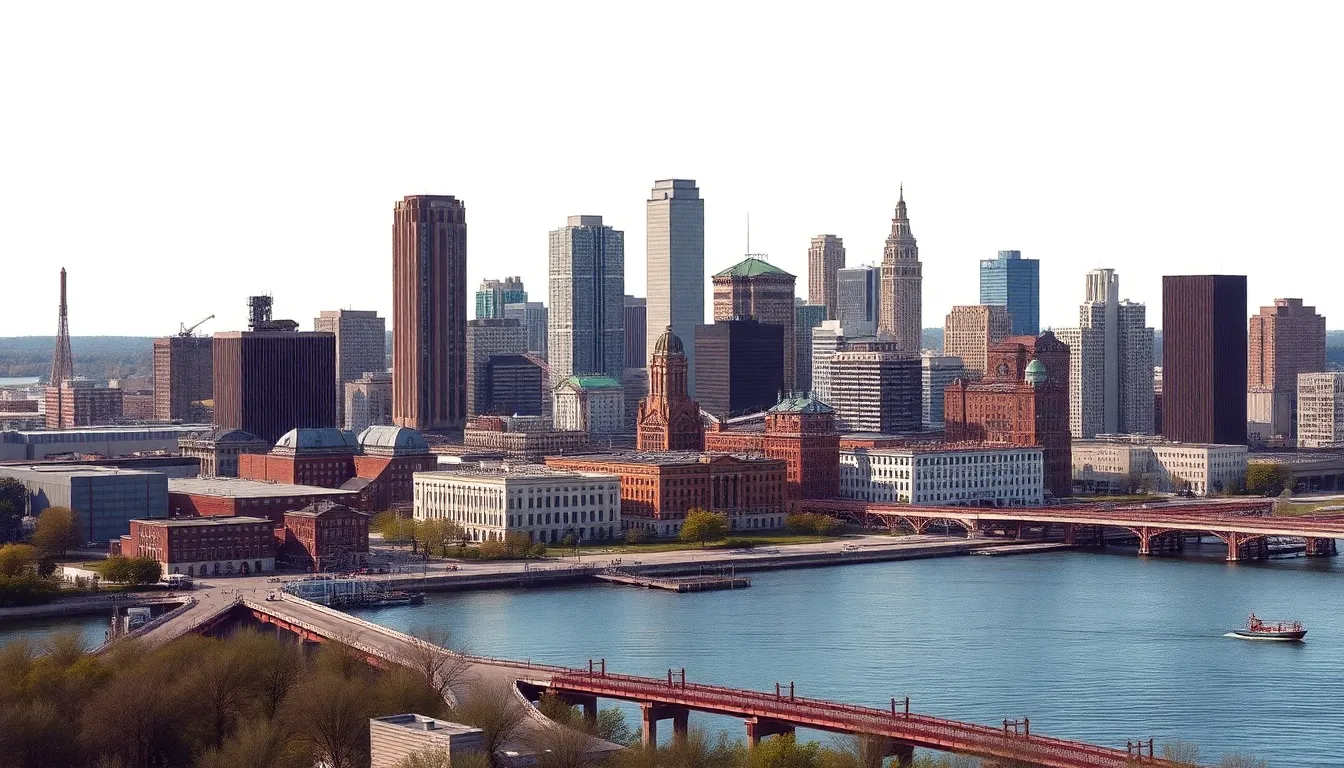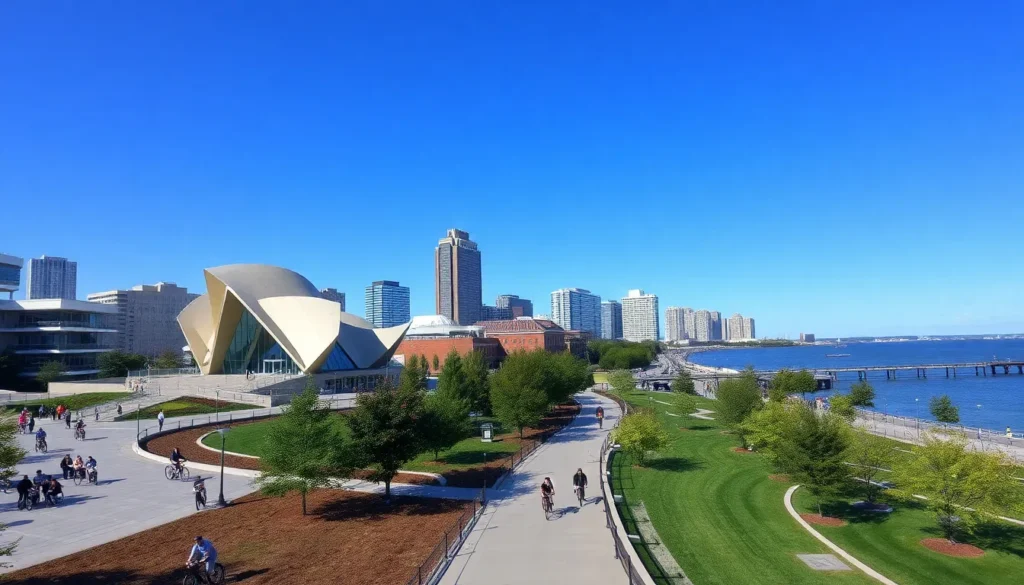Milwaukee often raises an eyebrow or two when people wonder about its home state. Is it in Michigan? Minnesota? Nope! This vibrant city is nestled in the heart of Wisconsin, the land of cheese, beer, and some seriously impressive lakes.
Table of Contents
ToggleOverview of Milwaukee
Milwaukee, located in Wisconsin, ranks as the largest city in the state. Known for its rich cultural history, the city showcases a vibrant arts scene and diverse neighborhoods. Brewery tours attract beer enthusiasts from across the country, celebrating Milwaukee’s historical ties to brewing.
The city sits on the southwestern shore of Lake Michigan, which provides scenic waterfront views. Numerous parks and recreational areas enhance Milwaukee’s outdoor appeal, drawing residents and visitors alike. Festivals like Summerfest, one of the largest music festivals in the world, highlight the city’s lively atmosphere.
Educational institutions such as the University of Wisconsin-Milwaukee play pivotal roles in local development. Various industries, including manufacturing and healthcare, fuel the economy and provide job opportunities. Milwaukee’s commitment to the arts is evident in venues like the Milwaukee Art Museum, known for its stunning architecture.
Living in Milwaukee offers access to a blend of urban and natural settings. Community events and local markets foster connections among residents. The city’s dedication to sports further unifies the community, with teams such as the Milwaukee Brewers and Milwaukee Bucks boasting passionate fan bases.
Overall, Milwaukee reflects a unique combination of Midwestern charm, cultural richness, and economic vitality. Its location in Wisconsin not only provides a backdrop for scenic beauty but also serves as a focal point for innovation and growth.
History of Milwaukee


Milwaukee’s history reflects its growth as a vital city in Wisconsin. The region’s development showcases a mix of industrial progress and cultural richness.
Founding and Early Years
Founders such as Byron Kilbourn and George H. Walker established Milwaukee in 1835. Settlement began around the Milwaukee River, attracting settlers drawn to its resources. The area’s proximity to Lake Michigan promoted trade and transportation. As more immigrants arrived, they contributed to the city’s diverse culture. German immigrants played a major role, influencing Milwaukee’s brewing industry significantly. By the 1850s, Milwaukee emerged as Wisconsin’s largest city, marking the beginning of its rapid growth.
Significant Developments
Significant industrial growth marked the late 19th and early 20th centuries. Industries like brewing, machinery, and textiles drove economic expansion. Major companies such as Pabst, Schlitz, and Miller thrived during this period, establishing Milwaukee as a brewing capital. The construction of railroads linked the city with national markets, enhancing trade connections. Additionally, cultural institutions like the Milwaukee Art Museum flourished, showcasing local talent. As the 20th century progressed, Milwaukee embraced modernity while retaining its rich heritage, fostering a vibrant community.
Geography of Milwaukee
Milwaukee’s geography plays a key role in its identity as Wisconsin’s largest city. Located along the western shore of Lake Michigan, it offers stunning waterfront views and ample opportunities for outdoor activities.
Location within the United States
Milwaukee sits in the southeastern region of Wisconsin. It lies approximately 90 miles north of Chicago, making it a gateway between major metropolitan areas. The city’s coordinates are 43.0389° N latitude and 87.9065° W longitude, situating it within a distinct climatic zone known for humid continental weather patterns. Seasonal changes showcase beautiful foliage in autumn and vibrant snow scenes in winter. Nearby interstates, including I-94 and I-43, facilitate easy access for visitors traveling to and from surrounding states.
Surrounding Areas and Landmarks
Adjacent to Milwaukee, various neighborhoods and landmarks enhance the city’s appeal. The Historic Third Ward features trendy boutiques and upscale dining options. Nearby, the Milwaukee Riverwalk provides scenic pathways for pedestrians along the river. Additionally, major parks like Milwaukee County Park host numerous recreational activities, including hiking and picnicking. Notable attractions like the Milwaukee Art Museum and the Discovery World aquarium enrich the cultural landscape. The proximity to Lake Michigan ensures access to beaches and water sports, making Milwaukee a popular destination for outdoor enthusiasts.
Culture and Community
Milwaukee showcases a vibrant cultural landscape that reflects its diverse population and rich heritage.
Demographics and Diversity
The city’s demographic profile highlights its cultural richness. Approximately 594,000 residents represent various ethnic backgrounds including African American, Hispanic, and Asian communities. Population growth has contributed to Milwaukee’s transformation into a multicultural hub. Furthermore, neighborhoods like the South Side celebrate Latino culture while the North Side is known for its African American heritage. This diversity enriches local traditions, food, and festivals, fostering a sense of community among residents.
Arts and Entertainment Scene
Milwaukee’s arts and entertainment scene thrives with numerous venues and events. The Milwaukee Art Museum houses impressive collections, drawing art enthusiasts year-round. The city hosts many music festivals, with Summerfest being among the largest in the world. Local theaters, like the Milwaukee Repertory Theater, showcase regional talents and national productions. Throughout the year, events celebrate cultural diversity, from the Black Arts Fest to the Mexican Fiesta. Each year, numerous art galleries and performance spaces contribute to a dynamic cultural experience, making Milwaukee an exciting destination for locals and visitors alike.
Economy of Milwaukee
Milwaukee’s economy thrives on a diverse mix of industries and a growing workforce. Its economic foundation is built on manufacturing, healthcare, and finance.
Major Industries
Manufacturing holds a significant position in Milwaukee’s economic landscape, driven by major companies in beer production and machinery. The city hosts diverse sectors, including healthcare and biotechnology, with institutions such as Froedtert Health and Aurora Health Care contributing to job creation. Education also plays a vital role, as the University of Wisconsin-Milwaukee fosters research and innovation. Further, logistics benefits from Milwaukee’s strategic location near important highways and railways, facilitating trade and transportation.
Employment Trends
Employment trends in Milwaukee reflect the city’s evolving economic climate. Anecdotal evidence from local businesses shows job growth in technology, healthcare, and skilled trades. Recent statistics indicate an unemployment rate around 3.5%, lower than national averages, highlighting a stable job market. Training programs in community colleges align with workforce demands, preparing residents for emerging careers. Increased interest in remote work options has also shifted job availability, offering flexibility for employees and businesses alike.





